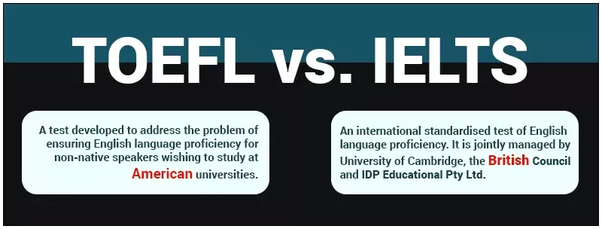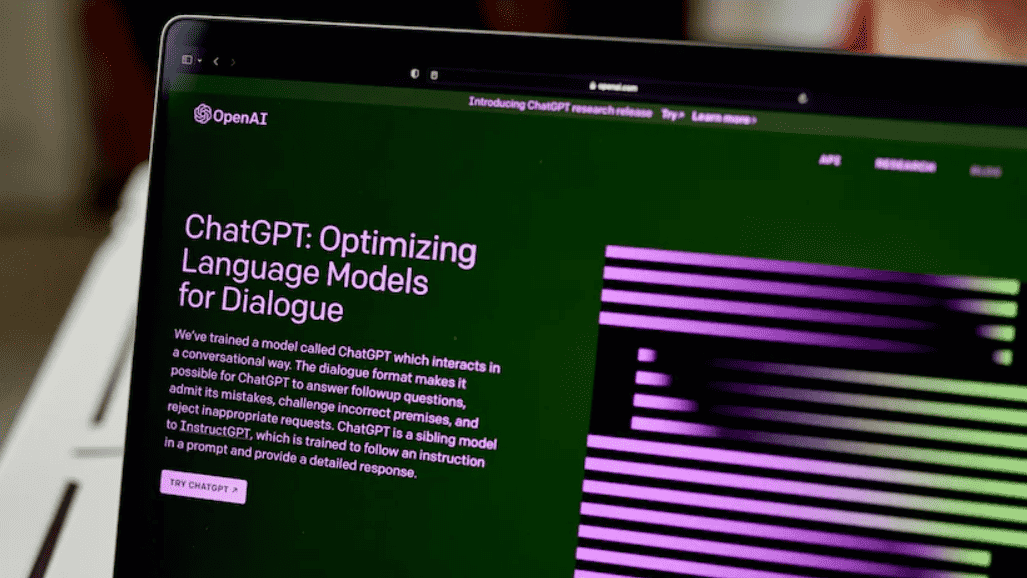
The two main English language proficiency tests accepted at universities across the world are the Test Of English as a Foreign Language (TOEFL) and the International English Language Testing System (IELTS). Achieving a particular score on one of these tests could help you study in English at the institution of your choice.
The tests and their scoring system differ, so it’s good to understand a bit more about them before deciding which one to take.
Main differences between TOEFL and IELTS
-TOEFL generally requires that you only use either US English or UK English during your examination and not mix the two, whereas IELTS seems to be a bit more flexible.
-TOEFL consists mainly of multiple-choice questions and the IELTS has more variation in how questions are formed and answers need to be given.
-The IELTS exam is shorter than the TOEFL.
-The IELTS speaking section is done face to face with an examiner.
TOEFL iBT
Universities that require a TOEFL score usually ask you to meet a specific iBT score. iBT stands for the internet-based test and is the latest version of a TOEFL assessment.
It is the preferred test for entry requirements of US universities, and the most widely accepted English proficiency test for higher education.
TOEFL scores
Although a university will ask for an overall TOEFL score, they may also require that you meet a certain number of points in each section.
Test sections of the TOEFL iBT
The TOEFL iBT test is split up by language ability in different areas. You’ll be tested across reading, listening, writing and speaking and given a score for each that combine for an overall score.
| Skill | Scoring | Level |
|---|---|---|
| Reading | 0-30 | High: 22-30 Medium: 15-21 Low: 0-14 |
| Listening | 0-30 | High: 22-30 Medium: 14-22 Low: 0-13 |
| Speaking | 0-30 | Good: 26-30 Fair: 18-25 Limited: 10-17 Weak: 0-16 |
| Writing | 0-30 | Good: 24-30 Fair: 17-23 Limited: 1-16 Zero: 0 |
| Total | 0-120 |
You must register and book a TOEFL test well in advance as there can be waiting lists for availability in some areas. Registration for a test date closes seven days before that test, so always give yourself plenty of time.
The TOEFL iBT takes around four hours to complete and consists of four skill sections. There is a mandatory break to be taken halfway through. The reading and listening sections can vary in length depending on the number of questions you get.
TOEFL reading section
This section is scored by a computer and consists of 36-56 tasks based on reading academic texts and answering questions on your comprehension of them.
TOEFL listening section
This section is also scored by a computer but consists of 34-51 tasks based on listening to lectures, classroom discussions and conversations, then answering questions on your understanding of them.
TOEFL speaking section
There are six tasks in this section that are scored by a human assessor. The section lasts for 20 minutes.
TOEFL writing section
This section is scored with a human and computer rating to get the best understanding of content and meaning. There are two tasks to complete in around 50 minutes.
IELTS academic
All British universities accept IELTS academic test scores as a certification of English language ability, however the level required varies by each institution and their programs.
The IELTS academic is also widely accepted in Canada and Europe.
IELTS scores
You’re awarded a band between zero and nine, including half scores, to express your English language level.
| Band score | Skill level |
|---|---|
| Band 9 | Expert user |
| Band 8 | Very good user |
| Band 7 | Good user |
| Band 6 | Competent user |
| Band 5 | Modest user |
| Band 4 | Limited user |
| Band 3 | Extremely limited user |
| Band 2 | Intermittent user |
| Band 1 | Non-user |
| Band 0 | Did not attempt the test |
Test sections of the IELTS
The IELTS listening, reading, and writing sections are all taken on the same day. You can choose to do your speaking test on the same day as the other sections, or up to a week before or after.
IELTS listening section
In the listening section of the test, you’ll listen to four recorded monologues or conversations. This takes 30 minutes, plus 10 minutes for writing up your answer.
IELTS reading section
The reading section of the test takes an hour; it consists of three long reading passages with tasks. The texts given will be found in books, journals and newspapers with graphs and illustrations possibly included.
IELTS writing section
In the writing section, you’ll need to write a minimum of 150 words on the graph, table or diagram given. You’ll then have a short essay task of 250 words minimum.
IELTS speaking section
This section is relatively short and may only last around 15 minutes. You will need to talk at length about a familiar topic, and answer questions. This section is face to face with an examiner who will determine your score.
IELTS vs TOEFL scores
The overall scores from TOEFL and IELTS can be roughly compared as follows:
| TOEFL | IELTS |
|---|---|
| 118-120 | 9 |
| 115-117 | 8.5 |
| 110-114 | 8 |
| 102-109 | 7.5 |
| 94-101 | 7 |
| 79-93 | 6.5 |
| 60-78 | 6 |
| 46-59 | 5.5 |
| 35-45 | 5 |
| 32-34 | 4.5 |
| 0-31 | 0-4 |
CEFR score equivalents
Many European students will be more familiar with the CEFR scale, which measures european language proficiency in boundaries of letters and numbers.
In general, a student wanting to study abroad at undergraduate level must be studying the language of teaching of the institution at B2 level or above. A B2 level would equal an IELTS score in the range of 5.5-6.5, however you can’t commonly use a CEFR level in place of a requested IELTS or TOEFL score.






